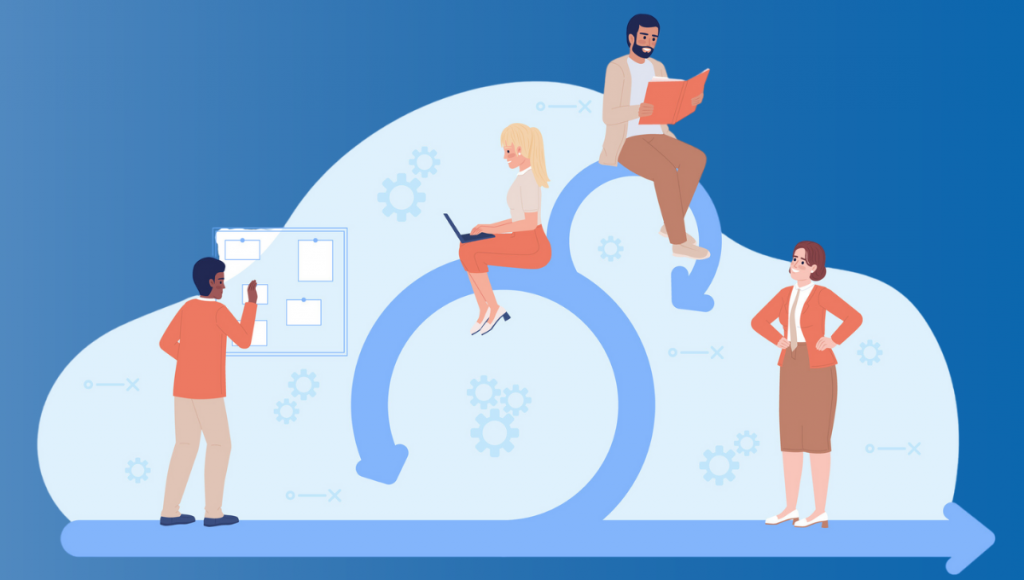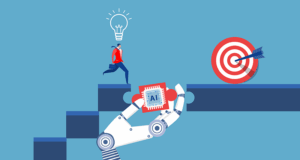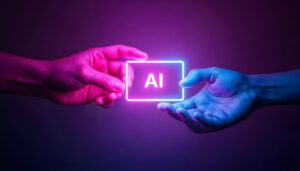How many times have you heard someone say, “This is the new normal”? If you feel like you’re in an episode of the “Twilight Zone,” you aren’t alone. In fact, whenever society has faced a widespread obstacle that’s impacted our perceptions and lifestyles, we’ve described it as a “new normal,” like the financial crisis of 2008, the Sept. 11 attacks, and most recently, the COVID-19 pandemic. There are even references to it in the early 1900s, in the aftermath of World War I. Yet, in the past several years, we’ve amped up its usage, repeatedly calling out a “new normal” in response to social, political, and economic challenges.
One reason we default to this kind of statement is because it acts as a form of reappraisal, dampening a natural threat response that occurs when our environment changes or we’re faced with uncertainty. Reappraising an unexpected change as a “new normal” allows us to figure out a way forward in an uncertain environment without being paralyzed by threat. It also assumes this “new normal” will be stable for the foreseeable future. Once we adapt to it, we can settle in.
This all makes sense. But what if the environment doesn’t stabilize, and there really is no “new normal”? In fact, maybe we should just stop using the term altogether. What if the environment we’re in now and in the future is defined by change and unpredictability? If this is the case, reappraising it as a “new normal” won’t work. We’re going to need a different way to respond — a way that allows us to be adaptive and efficient in the face of challenges. And the key may lie in learning agility.
The importance of being agile
The concept of learning agility emerged from the observation that some individuals just “learn differently.” They’re able to view problems with a wider lens than their peers, work effectively with all types, willingly experiment with new tactics, actively seek and accept feedback, and take risks. They make mistakes but persevere to achieve their goals. What’s more, they’re willing to let go of old behaviors and skill sets and readily learn new ones as situations arise.
When faced with obstacles such as unpredicted change, our natural response is resistance or anxiety. However, an organization that’s able to adapt quickly and recalibrate with clear actions forward will set itself apart from others. Creating a learning agile workforce enables organizations to do just that: efficiently pivot in the face of change. For example, such a workforce will react to a new generative AI process platform by actively engaging and experimenting with the technology, learning new skill sets while willingly ceasing prior ways of working.
A learning agile workforce is also one that responds to challenging or negative feedback from clients not with anger or avoidance but by leaning in. They use it constructively to build new ways of working with the clients, asking them for more feedback along the way.
Components of learning agility
Like all human behavior, learning agility arises from how our brains engage with the environment. Research has suggested three components of building it:
- Growth mindset: Individuals with a growth mindset believe success is attained through hard work. They assume mistakes can be learned from, and they’re more likely to take risks and seek feedback to improve their performance. Importantly, individuals with a growth mindset are also more likely to demonstrate flexibility in the way they solve problems and to feel rewarded during the process with engagement of the brain’s motivational and reward networks.
- Experiential learning: In contrast to typical learning actions, such as reading a book or listening to a lecture, experiential learning implores the individual to jump into the experience, requiring them to do something new, get out of their comfort zone, take risks, make mistakes, course-correct, and grow. The neural benefits of learning while experiencing are vast because it engages the sensory, motor, and emotional networks. These, in turn, more deeply activate our learning networks, like the hippocampus, resulting in a richer learning outcome.
- Enhanced mindfulness: The process of becoming an agile learner isn’t complete without consistent reflection. Individuals who are mindful tend to be more aware of their environment, process information more intentionally, think analytically, and perceive experiences with greater clarity and objectivity. In fact, mindfulness is associated with more effective interpersonal communication, reflection, and resilience — all critical to learning agility. Engaging in mindfulness activates an area of the brain called the default mode network that’s critical for understanding the social environment around us.
Creating a learning agile workforce
Understanding and embedding the three research-backed components of learning agility can help organizations create a workforce equipped to thrive through challenges. To do this, first instill a growth mindset by shifting the emphasis from the need for flawless performance toward one of sustained progress and continued improvement. Second, provide opportunities for everyone to engage in the experience of learning by encouraging experimentation or offering options for learning new skill sets. Finally, provide space and time for engaging in intentional reflection about work. This could mean blocking time in daily calendars to encourage reflection, holding meetings to review actions or outcomes, or giving frequent feedback focused on recent learnings.
The challenges organizations confront now won’t be the same ones faced in a year or even six months. But by equipping ourselves and our organizations with learning agility, we can face obstacles today and in the future.
We explore the science of learning agility and others at NLI’s annual Summit, Oct. 4-5.






